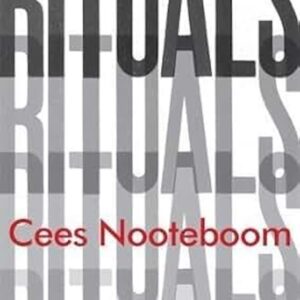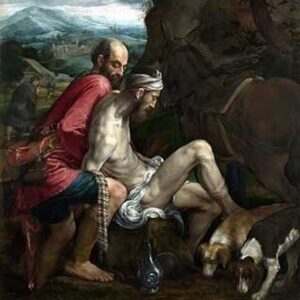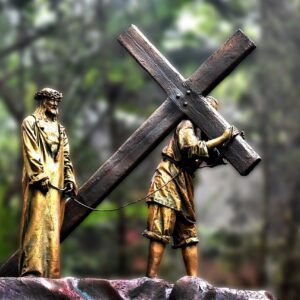It’s much easier to judge the past than the present. The passing of time clarifies where our predecessors got things badly wrong, while we have yet to discover which of our precious orthodoxies will prove foolish. What, for example, are the clichéd tropes and stock characters plaguing much contemporary popular fiction? More to the point: in a literary world that celebrates iconoclasm and distrusts traditional institutions, can religious faith be portrayed without irony?
These questions came to my mind while reading two recent novels that buck current trends: Phil Klay’s Missionaries (Penguin, 2020) and Christopher Beha’s The Index of Self-Destructive Acts (Tin House, 2020). Critics have described each as “a novel of ideas,” though neither author reduces his characters to vehicles for competing ideologies. Both novels are related through the eyes of several characters who disclose complex motivations and desires without resort to stilted expository set pieces. Both authors have an insider’s experience of creaky institutional structures – the military-industrial complex for Klay, the New York literary establishment for Beha – adapting with difficulty to twenty-first century realities. And both treat their characters’ religious faith (or lack thereof) in refreshingly matter of fact ways. Klay and Beha draw on Catholic roots and, it would seem, ongoing Catholic convictions to inform their fiction. If the authors don’t immerse the reader into a thick Catholic ethos as do Alice McDermott or Ron Hansen, neither do they treat “religious” characters as captives to an atavistic collective psychosis as in the novels of Ian McEwan, Martin Amis, or Philip Pullman. Faith plays a constitutive but not solely defining role in the lives of some of Klay’s and Beha’s characters.
Missionaries, Klay’s first novel, expands the scope of his short story collection, Redeployment, by exploring the United States’ global military across two decades and three continents. Klay’s American narrators, Lisette, a disillusioned war correspondent, and Mason, an Army medic turned military liaison, move from Afghanistan and Iraq to Colombia with brief layovers in the U.S. Their Colombian counterparts, Abel, a villager trying to redeem himself after serving under a ruthless paramilitary leader, and Juan Pablo, a lieutenant colonel fretting over his daughter’s social idealism and a looming national referendum on a peace treaty with the FARC guerrillas, struggle with the consequences of American military support for the Colombian military in what Klay makes clear is another front in the open-ended “War on Terrorism.”
Two other important characters never speak to us directly: Juan Pablo’s daughter, Valencia, for whom social engagement springs from the Catholic convictions her father once had, and Luisa, a survivor of military violence now leading a program to rehabilitate perpetrators and recipients of brutality in rural Colombia. Luisa’s motivations are not explicitly religious, but her willingness to assist Abel, who was present when his paramilitary group executed Luisa’s father, embodies Jesus’ command to love one’s enemies far more clearly than the behavior of the nominal Christians in the novel.
Klay never lets us forget that the United States, fancied by some as a “shining city on a hill,” is the major market for Colombia’s drug producers and Colombia’s chief supplier of military hardware, the latter role potentially threatened if the Colombian people vote for peace. Many of the Columbians cannot help but compare their country’s suffering to that of the crucified Christ. Even Juan Pablo, whose Jesuit high school mysticism has been supplanted by a tenuous faith in redemptive violence, recalls how his daughter’s birth reminded him of an “eternity wounding the material world, wounding the boundaries of my own brain and body, and making me part of a larger story.”
Christopher Beha’s third novel, The Index of Self-Destructive Acts, chronicles a cluster of New Yorkers living in the wake of the 2008 financial implosion. Sam Waxworth, a new arrival to the city from the Midwest, authors a magazine-sponsored blog, The Quantified World, looking at current events through the lens of statistical analysis, reflecting Sam’s belief that all life choices can be reduced to quantifiable data and risk-benefit analysis. Frank Doyle is an aging newspaper columnist who drinks far more than he writes after losing his job for making a racist joke in the broadcast booth during a Mets game. His once liberal political views shifted rightward after September 11, but he continues to see the world as a surplus of inexpressible meaning. Uniting these two is a love for baseball, although even here they’re at loggerheads, with Sam systematically decoding the game with the mathematical rigor of Sabermetrics while Frank revels in the sport’s poetic intangibles.
As Waxworth researches a magazine profile on Doyle, he becomes entangled in surprising ways with Frank’s wife, Kit; his two adult children, Margo and Eddie; and a longtime family friend, Justin, an African-American hedge fund manager. In a novel that opens with Herman Nash, a dubious street preacher, predicting the world’s imminent destruction, the religious lives of the major characters are revealed in straightforward, non-ironic ways. Sam rejects his parents’ conservative Christianity for the same reason he renounced his boyhood love for Frank’s early baseball books: hard numbers and universal algorithms proved more persuasive than “gauzy” poetics. Frank and Kit are Irish Catholics with a fondness for ritual and tradition but little in the way of active religious practice, although Kit prays with the family’s Latina maid and attends Catholic mass when she realizes her career as an investment banker has come to an ignominious end. Margo preferred her father’s love of poetry to his nominal Catholicism, but her aspirations as a poet die during a romantic dalliance with a famous professor of literature. Eddie, an alienated veteran of the Iraq War, finds genuine healing in Nash’s apocalyptic ministry, ultimately proving more faithful and generous than the preacher himself. And Justin, who financially supports the African-American church his mother attends – but does so from a discreet distance – is welcomed as a brother by the congregation when his career, like Kit’s, collapses in disgrace.
The street preacher’s haunting question — “What would you change if you knew it was all going to end?” — grows increasingly apposite as the novel approaches its tragic conclusion. The story ends with a ruined and confused Frank staring up from his bed, wondering what meaning one could find in life, “If only you could know it was all being written in a book…if only there was a recording angel,” not realizing that the angel’s face before him is his daughter’s.
A common feature of these two highly recommended books is their representation of religious faith in a medium – the novel – that has of late had little good to say about religion. Perhaps they point toward something analogous to the Bechdel Test, in which characters who happen to be religious are presented unironically as full, if flawed, persons who act upon and talk about their convictions without collapsing into the stereotyped roles of hypocrite, fanatic, or repressive killjoy. Such characters also live in the novels of Erin McGraw, Kirstin Valdez Quade, and Daniel Taylor. That I could name more such authors is an encouraging sign. Will novels of the future continue to make room for three-dimensional religious characters? Time will tell.
Brian Volck is a pediatrician and writer living in Baltimore. He is the author of a poetry collection, Flesh Becomes Word, and a memoir, Attending Others: A Doctor’s Education in Bodies and Words. His website is Brianvolck.com





